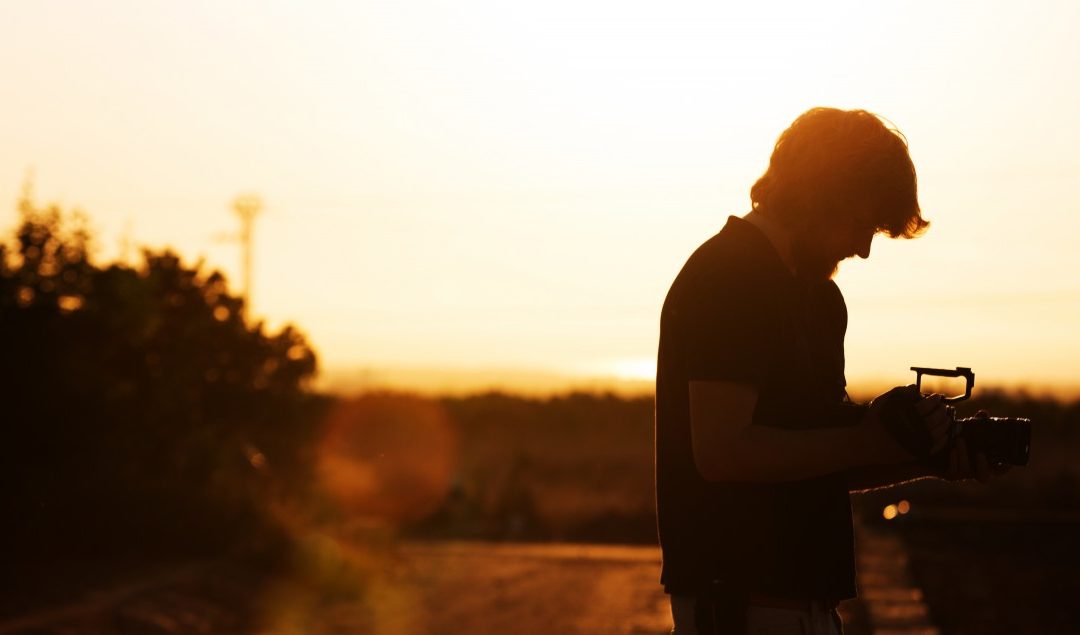
In this interview Bold Content’s Director of Photography Matt Camlin explains the importance of sound for creating an effective corporate video. He also explains how to achieve the best sound quality no matter where you are filming.
“60 to 70% of information in a film gets to its audience via sound”
Why is sound an important element when creating a corporate video?
Clear sound is very important, whether you try to communicate a marketing message or you’re trying to tell a joke. If the sound is not clear then the message won’t translate properly to the audience. In video production it is therefore very important that the sound quality is very high.
How do you capture sound for a traditional interview or talking heads style video?
When you are filming a sit down talking heads interview video, the environment is usually nice and controlled. The subject is almost still so we can usually use a clip microphone. This is a little microphone that you can clip to a subjects blazer or dress, and you can hide the wire behind their clothes. These microphones are great because they are very powerful, it carries a strong signal, and the signal goes straight back into the camera or the audio recorder. Which is the ideal way to capture audio.
Can you explain the different between a wire and wireless microphone?
The difference between using a wired microphone versus a wireless microphone is that the clip microphone carries the signal through an XLR cable, a three-prong industry standard cable either straight into the camera or to a radio pack, like you see on TV. The radio pack is carried by the subject; the signal will go to a receiver that sits on the camera or on the audio recorder.
We usually go or the wired option because it is safer. You lose less data, especially in central London where we do a lot of our work, you’ll have interference of other radio frequencies. You’ll have the police going past on their walkie talkies, a bike messaging service, airplanes, so there is a lot of interference on the airwaves. So if you are in a busy or crowded environment its much safer to use the wired option.
What else do you use in addition to the clip microphone to capture sound?
In addition to the clip microphone we will often take a boom microphone as well. This will depend on the number amount of people we have available on a shoot. If you are unfamiliar with a boom microphone it is the big fluffy thing you see on the telly, where the soundman is hanging the microphone above the subject. The two microphones will go in via two different inputs.
Are there advantages to using both a boom and clip microphone?
A colleague and I did a shoot recently for a promotion video, which was recorded in a studio, so a nice and controlled environment. It was a simple setup with a studio background nice and well lit, with a clip microphone on the subject and also a boom microphone overhead. Because they are imported separately, that means should one of the microphones fail or one has a problem, we still have lots of options. It also means we can get a better sound mix when we get it into postproduction.
How do you handle sound when the subject is moving?
During the summer of 2014 we shot several documentaries for Coca-Cola around Europe including Valencia. In Valencia we did a lot of walking and talking interviews with a farmer. I was on the Movi, which is a type of steady cam, and the soundman used a boom microphone on an extension pole over head and we used an additional wireless clip microphone.
We couldn’t use the wired microphone because he was walking, so we had to be more mobile. So in this case the wireless option worked because we were in the countryside so there was no police on radios and planes flying overhead.
Sound really is dependant on the situation in which you are working and obviously being a professional production company, we know the production, the challenges we will face, and we will always find a way to work around them.
What other problems do you encounter when capturing sound?
Another aspect of sound recording is noise, specifically room noise. Every room has a noise to it, there will often be a plane flying overhead when you’re around London, a train or a car passing by outside. Then inside the room you might have noises from things like refrigerator (when you’re in a bar) or air-conditioning.
So wherever you are there is always noise; that is just the world we live in. What can be challenging during postproduction is that when you cut from a room that is fairly quiet, with very clear sound to a location that is maybe outside and you have a lot more noise or loud busses driving past. Of course this is limited because we use good equipment, but some noise is inevitable. To make this transition even smoother and almost unnoticeable we capture a minute or so of white noise. This is just like room noise to hear what the room sounds like and helps to create a sound scape.
Also, you have to support the noises you hear with visuals that explain the sound. People pick up very quickly if they hear something they can’t see. So if you hear a car, you should be able to see a car. When there is no connection between visuals and sound the artificial world you create in film falls apart.
If you need your own corporate video we would love to talk to you.
Call us on 0203 637 1467 or use the contact form below.
CONTACT US



